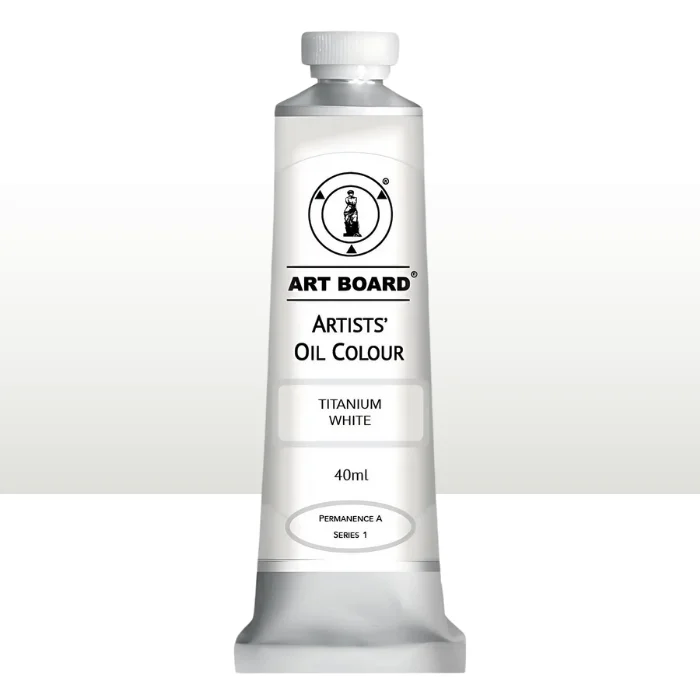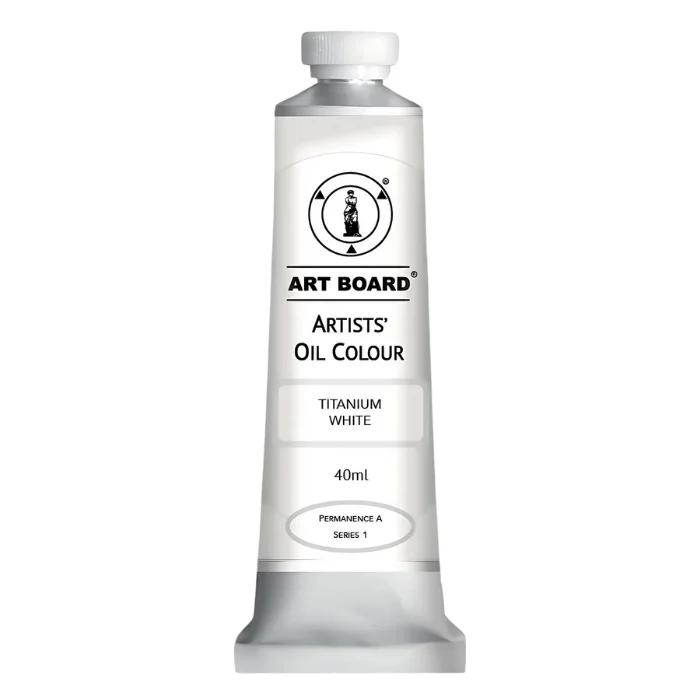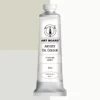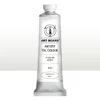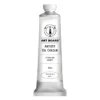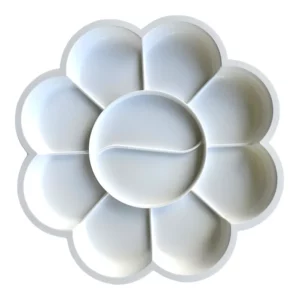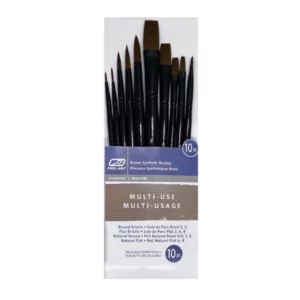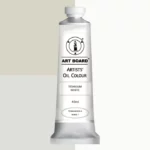
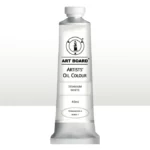

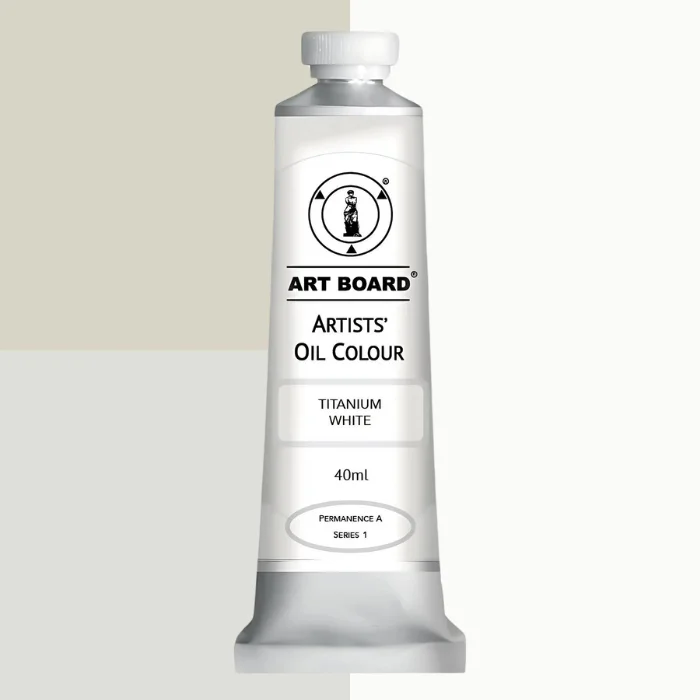
Titanium White Artboard Oil Paint 40ml
R80.00
Standard Shipping
- Traditional oil paint that’s proudly made in South Africa.
- Art Board Oil paints are triple milled to perfection with a smooth and buttery consistency.
- The high pigment load ensures vibrant colours with a wide selection to suit your palette.
- Artboard Oil Paints are available in 44 colours.
- Each tube contains 40ml.
- Artboard also provides a number of mediums and solvents to compliment their range of oil paints.
- Artboard Oil Paints are suitable to the beginner artist and are a cost effective option.
Titanium White:
-
Mixing Base: Titanium White is a crucial mixing colour. Use it to lighten other colours, create tints, and control the overall value of your palette.
-
Impasto Techniques: Experiment with impasto techniques by applying thick layers of Titanium White. This adds texture and three-dimensionality to your artwork.
-
Blending: Titanium White is excellent for blending and softening edges. Use it to create smooth transitions between different colors and shapes in your painting.
-
Highlighting: Use Titanium White for highlighting. Apply it to the areas of your composition that are hit by direct light to enhance the sense of volume and realism.
-
Creating Pastels: Mix Titanium White with other colours to create pastel tones. This is useful for conveying a softer or more muted atmosphere in your paintings.
Oil Paint FAQ’s
What is the fat over lean rule?
Oils possess the flexibility of being extended with drying oils and thinned using solvents. Unlike acrylics and watercolours that dry as their water content evaporates, oil paint undergoes a distinct drying process.
The oil, in oil paint reacts with the air, leading to solidification through a gradual process known as oxidization. Simultaneously, the solvent in the paint evaporates, a relatively quick process. However, the oxidization process is notably slow and continuous. As oil paint oxidizes, it undergoes contraction. Applying a faster-drying medium over insufficiently dried oil paint may result in cracking (if anything that dries faster is put on top of not-sufficiently-dry oil paint it is likely to crack). This clarifies why oils can be painted over acrylics but not vice versa. It also emphasizes the importance of the “fat over lean” principle in oil painting – using paint with more oil over paint with less oil, which is more diluted with solvent. This ensures a proper drying sequence, as the higher oil content extends the drying time.
Are different Brands of Oil Paint intermixable?
All brands of oil colour are intermixable.
What is the difference between Professional Oil Colour and Student Quality Oil Colour?
Professional paints pack in as much pigment into the oil as possible. Pigments are ground to a precise particle size that optimises the visual qualities of the colour, and then milled carefully into the drying oil binder. Occasionally the pigment to oil ratio is so great that the weight of the pigment sinks to the bottom of the tube, causing the binder and pigment to separate (this can be rectified by stirring the contents of the tube with a straightened paper clip). This allows the unique characteristics of the pigments to have a greater influence on the behaviour of the paint – properties such as sheen, transparency, tinting and staining capacity. These vary from colour to colour and contribute to the dynamism that can be achieved on your canvas. Professional paints comprise a greater number of single pigment colours; colours look purer, more luminous and are easier to create vibrant mixes with.
Student quality paints have less pigment in them in order to keep production costs down, and may have added fillers to make the paints more uniform in tinting strength, viscosity and covering power. Driers are often added to slow drying pigments so that all colours dry at the same rate – the differing drying times of colours in professional and artist ranges can be a surprise for painters that have upgraded from student paints. Combinations of less expensive pigments are sometimes blended to replace the most expensive single pigment colours (these have the word ‘hue’ in their colour name). Colours may appear more chalky than Professional colours, and the choice is sometimes more limited and conventional. However, the affordability of student grade paints make them a popular choice for painters who are new to oils as well as those who need to stick to a budget.
What Mediums do I need?
Today, the market offers an extensive variety of oil paint mediums, providing you with the chance to engage with paints tailored to your specific preferences. Here’s how you can customize your paint using oil mediums…
Painting Mediums to Alter the Viscosity of Oil Paint:
Modifying your paint with a medium can vastly change the handling properties of the paint. If we consider oil paint to have a buttery consistency lying somewhere in the middle between liquid and stiff, then by adding the right painting medium you can take your paint either way, towards very fluid or very thick.
Increasing Flow:
If more control is needed over your paint, for fine detail perhaps, then a medium that reduces the viscosity of oil paint, creating a controllable amount of flow, will facilitate this. This also makes it possible to produce flat, brushless areas because the paint will level out. Glaze mediums, alkyd mediums or oils will all do this, whilst introducing their own unique characteristics such as transparency in the case of the glaze medium, a hard enamel-like surface in the case of the alkyd medium and depth of colour in the case of an oil.
Increasing Body:
In contrast, if you want to retain brush marks in the paint or a painting knife is being used and a loose, impasto approach is desired, then you will want to thicken the paint. This is usually done by mixing it with a wax or gel medium. Gel and impasto mediums are produced in a variety of densities depending on the manufacturer. Heavy gels and stiff impasto mediums will produce dramatic, sharply defined painting knife ridges, whereas softer mediums will be easier to manipulate and the edges of your marks will be rounder and a little more subtle.
Painting Mediums to Alter the Surface Finish of Oil Paint:
All painting mediums irrespective of their purpose will alter the surface finish of your painting to some degree. Oil paint contains pigment, oil, sometimes driers and more often than not a filler called blanc fixe, so anything further that we add to this combination of materials, will inevitably change the appearance of the paint once it has dried.
So if you want to alter the consistency of paint realise that you will also be changing the surface sheen of the paint at least somewhat, and if you are trying to alter the surface sheen with a medium you will also be changing the viscosity, at least somewhat. These two characteristics cannot be fully separated and go hand in hand. The most you can do is choose which you will prioritise, depending on the modification you want to achieve.
Paint can be altered to have anywhere from a matt surface finish, through a range of satin sheens, to a high gloss finish. Painting mediums containing wax will invariably produce a satin or matt finish, as wax is a matting agent. High amounts of natural resin in a medium will almost always create a high gloss finish. Synthetic resins such as an alkyd can vary from a low satin sheen to a gloss sheen.
Painting Mediums to Alter the Drying Time of Oil Paint:
The drying times of oil paint vary by manufacturer, based on the formulation that they use. In artist-grade paints, each colour also dries at its own rate, as the amount of oil and pigment differs for each pigment. The drying time of an oil paint can be adjusted considerably – shortening the drying time to just a few hours or lengthening it to several months.
Fat Mediums are Slow-Drying.
High oil content in a medium will mean a longer drying time, allowing for a longer open period with more time to manipulate the paint. These types of mediums are considered ‘fat’, so if you are painting in layers then these are best used in the middle and the final stages to add depth to colour. Over-painting fat mediums with leaner, quicker drying paint mixtures should be avoided as the fat medium will slowly expand as it cures, pulling apart the leaner layer above that has already formed a hard film, causing cracking.
Lean Mediums are Fast-Drying.
If a longer open period is not desired and a quick-drying medium is needed, driers will often be used, along with high amounts of solvents and resin and low amounts of oils. Depending on the exact ratio, the ingredients used and the application, this type of medium could be touch dry overnight.
Siccative medium is added to oil paint, drop by drop with a pipette, to increase the rate of drying.

